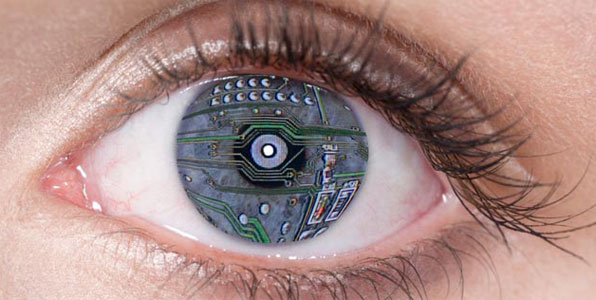Sections
In the United States, there is a study program known as the “Artificial Retina Project.” The project is truly developing a “bionic eye” for those who suffer from the disease of retina. The target of this study is to help patients with minimal light perception to get unassisted mobility. It includes a little camera as well as a computer chip affixed on a set of spectacles, and a tiny implant behind the ear connected to a range of electrodes linked to the cells of the patient´s retina. As a picture is clicked up through the camera, the information is transformed into digital signals, which have been sent via the implant toward the electrodes of the actual retina, from where they will travel via the optic nerve of the patient´s brain. What is pretty important here is that this device processes information instantly. The device will be manufactured by the Second Sight Medical Products Corporation and takes care of the battered photoreceptors. Currently, the product is only available for experimental use and not yet available for commercial use.

The researchers in this field started out human testing in the beginning of 2002. During the test period, almost 6 individuals with retina problems received the retinal prostheses. It includes of 16 electrodes enclosed within an array. Most of these previously blind people secured the eye power to identify objects within their surroundings and detect light as well as perceive motion. Out of this, one implant needed to be removed due to health reason, one patient died and the left over 4 patients carry on and use the bionic eye normally. In fact, the real human testing started in 2008. It is the most recent model of a good artificial retina and as a result of miniaturization; it now has more than 60 electrodes. It intelligently unifies innovative DOE national lab technologies and is made to last a lifespan. The set is clinically mounted in the retinal area and used along with an external digital camera and an advanced video-processing system to offer rudimentary sight for the implanted patient. Placing perfectly into the eye socket, the spic-and-span prosthesis is merely about a fourth the dimensions of the original retinal implant, therefore dramatically lowering the surgical procedures and, improves the recovery time.
Argus II functions not by hoping to replicate that intricacy, but by making use of the eye´s organic abilities. It links the gap in between the brain and the visual signals or the software transforms the signals in biological language. The device uses a small digital video camera mounted on a set of sunglasses, which transmits visual information to an electrode incorporated microchip deep-seated at the rear of the eye. The conductor, which is set for the damaged retinal tissues, starts transmitting digital signals right to the optical nerve. The user gets the information by means of a 60-pixel picture in black and white format.

The above figure represents the working of the bionic eye were :
The bionic eye system runs using a battery pack that is mounted along with a video processing device. When the digital camera clicks a picture of an image, that image is available as light and darkish pixels. It transmits the pixels to the processor of the video, which transforms the actual image into a number of electrical impulses that will represent light as well dark visual images. The processor chip sends these impulses to a radio transmitter which is connected to the glasses, which then direct those quivers in radio format into an implanted receiver placed beneath the patient´s skin. This receiver is actually directly affiliated using a wire to the particular electrode array placed at the rear of the eye, and it transmits pulses straight down the wire. Once the quivers reach this retinal implant, they elicit the set of electrodes.
The electrode set functions as the artificial tantamount of the retina´s photoreceptors. The set is then excited as per the encoded structure, that is, white and dark, that symbolizes the image. This is because the photoreceptors of the retina would be working as if they were the original retina. The electrical pulses formed by the excited electrodes then move as neural signals towards the visual center of the brain by means of the normal pathways utilized by healthy eyes of the patients optic nerves. The retinitis pigmentosa and macular degeneration of the optical neural paths are not damaged. Serotonin levels of the brain automatically interpret these impulses like an image and convey the subject that “you are seeing an image”.

It, however, requires some sort of training for the patient to really see an image. At first, these people see mostly light and dark spots. But, after some time, they slowly come to learn the structure in order to interpret what the brain is proposing them, and they ultimately perceive that design of light and dark as an image. The first version of the device had about 16 electrodes to send and receive messages or pulses. However, the latest product is still in clinical trials in several universities. The latest version of this device should provide high quality image resolution since it has far more electrodes. Scientists are already organizing a third version of the same with advanced features and thousands of electrodes on the retinal implant that they believe could permit facial-recognition abilities. It took $200 million dollars and about 20 years to get the FDA approval. Currently, almost 80 people have it mounted all over the world.
Sections